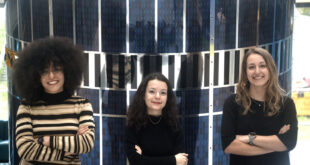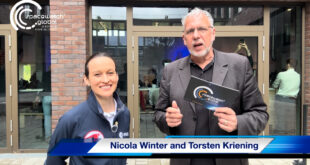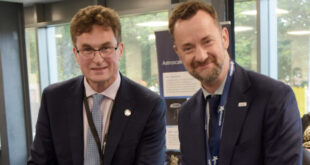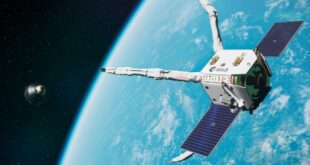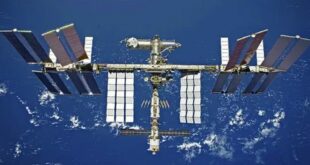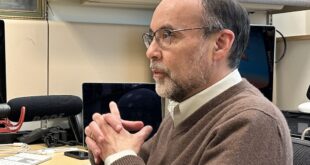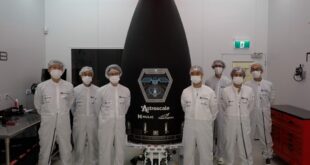Primo Space Fund has announced two new deals: Lithium Lasers and Ecosmic, investing about €2,6 million across both deals. This round of investments brings Primo Space Fund’s portfolio to fourteen companies. Lithium Lasers S.r.l., an Italian startup, developed a USPL called FemtoFlash for material processing, biophotonics and non-linear optics applications in several industries, and is particularly useful when dimensional accuracy and tighter tolerances are necessary.
Read More »The Space Café Podcast #105: Marie-Pier Boucher: If we fail to do this, there is not future in Space
SpaceWatch.Global is pleased to present: The Space Café Podcast #105: Marie-Pier Boucher: If we fail to do this, there is not future in Space. Episode 105 features special guest: Marie-Pier Boucher. Host Markus engages with Marie Pierre Boucher, who provides a fascinating perspective on integrating arts and diverse cultural elements into space exploration. Marie Pierre Boucher, a visionary from the University of Toronto, expands on her extensive work that spans across art, technology, and space, illustrating how these realms intersect to create more inclusive and sustainable environments in space.
Read More »European Spaceplane Summit – Interview with Nicola Winter
The 1st European Spaceplane Summit, organized by Polaris Raumfahrzeuge, started with a keynote by Nicola Winter, ESA Astronaut Reserve, Military Pilot, Entrepreneur, and Inspirator, about her challenging way into the space sector and maybe into space. Torsten Kriening had the opportunity to talk with her about spaceplanes and her view on the market. They also talked about Nicolas's big project—flying to space!
Read More »European Spaceplane Summit 2024 – Interview with Annika Wollermann
Today Bremen will write history. The 1st European Spaceplane Summit, organized by Polaris Spaceplanes, kicked off. Torsten Kriening spoke with Annika Wollermann, Chief Commercial Officer and Managing Director of Polaris Raumfahrzeuge GmbH, about the event, the vision , expected outcomes, and the status of their space plane.
Read More »Astroscale UK Completes PDR Phase for COSMIC Mission
Astroscale Ltd. ("Astroscale UK"), a subsidiary of Astroscale Holdings Inc, announces the successful completion of the Preliminary Design Review phase with the UK Space Agency (UKSA) for its national Active Debris Removal (ADR) mission, COSMIC (Cleaning Outer Space Mission through Innovative Capture). The Company also recently partnered with Space Trash Signs, an initiative to visualize the consequences of space debris on different aspects of life on Earth – highlighting the imperative need for missions such as COSMIC.
Read More »CLEAR Debris Removal Mission Reaches PDR Maturity
ClearSpace has announced that its CLEAR Mission – funded as part of the UK Space Agency’s national debris removal program – has achieved Preliminary Design Review (PDR) maturity, marking a significant advancement in the collective aim of making our space operations more sustainable. The CLEAR Mission will use ClearSpace’s robotic capture system to safely remove two dead, washing-machine-sized, UK satellites from orbit, mitigating the risk that these pieces of space debris pose to other space operations.
Read More »MDA Space Receives Contract Extension Towards the ISS
MDA Space has announced it has received a $250 million contract extension from the Canadian Space Agency (CSA) to continue supporting robotics operations on the International Space Station (ISS) from 2025 to 2030. Furthermore, as part of the contract, MDA Space will now fulfil robotics flight controller duties to support mission operations on the ISS.
Read More »Space Cafè Radio Frontiers – Mars, Moon and Water with Prof Angel Abbud-Madrid
In this episode, Dr Emma Gatti, Editor in Chief of SpaceWatch.Global, and Prof. Angel Abbud-Madrid, director of the Center for Space Resources at the Colorado School of Mines, dive into engaging discussions about space resources, focusing on water reserves on the Moon and Mars.
Read More »#SpaceWatchGL Opinion: 10 iconic marketing campaigns in Space
Marketing in outer space seems like an innovative idea, but it has 60+ years of history. Dr. Wernher von Braun, former Marshall Space Flight Center Director, pointed out on July 22, 1969: "Because without public relations we would have been unable to do it". Today, accelerated access to space provides unprecedented opportunities for #advertising stunts and viral marketing. Some campaigns raise ethical, environmental, and regulatory concerns, while others champion sustainability.
Read More »ADRAS-J Completes Rendezvous and Initiates Proximity Approach
Astroscale Japan Inc. has announced that its commercial debris inspection demonstration satellite, Active Debris Removal by Astroscale-Japan (ADRAS-J), has achieved a major technical milestone: completion of the rendezvous phase of its mission and the beginning of the proximity approach. This success is underscored by starting Angles-Only Navigation, a navigation method to estimate relative position and velocity through the servicer’s onboard cameras.
Read More » SpaceWatch.Global An independent perspective on space
SpaceWatch.Global An independent perspective on space

